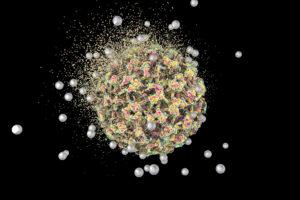Variables Needed to be Known for Ideal Treatment of Cervical Cancer
Many variables affects the gynecologist oncologist’s, radiation oncologist’s and medical oncologist’s shaping of the treatment of the patient. We can list under two main headings as variables of the patient and of the illness:
1: Variables of the patient:
a. Patient desiring pregnancy: Especially in Stage I cases if the patient wants to have a child the womb can be preserved. I have explained in detail how it can be protected and which surgeries can be applied in the (Treatment) section related to the subject. However what needs to be stressed is that when the patient has a pregnancy desire and if the tumor type and phase is proper the patient method completely changes.
b. The physical condition of the patient. It is extremely important. What it is meant by the physical condition is whether problems like heart disease or respiratory diseases or diabetes that shall increase the risks immensely of a long, high bleeding risk surgery. Another important physical condition is the weight of the patient.
c. Weight of the patient: Especially when decision of Type III Radical hysterectomy i.e. surgery is taken the weight of the patient is very important. The issue the patient with cervical cancer and their relatives consider is whether the surgery shall be done or not. However, when it is early stage (Stage I and II) cervical cancer Radiotherapy and radical surgery does not differ for the survival of the patient. Thus patient being morbid obese is a factor increasing risks including laparoscopic surgery. When deciding, the weight becomes an important parameter. Thus, the weight is a problem for this surgery.
d. Whether the patient is sexually active: In Stage 1 and 2 cervical cancer cases, when patient is sexually active and is fit for surgery physically the surgery is preferred. The fundamental reason for this that the radiotherapy causes shortening of the vagina.
e. Finally, the most subjective factor is the request of the patient. This is important because the duty of us, doctors, is to explain to the patient how the treatment shall be shaped in an understandable way as accurate and indifferent. The patient should decide in line with the information. Sometimes patients that can receive surgery or radiotherapy abstain from such a big surgery they may prefer radiotherapy.
2. Things to be known about the illness:
a. Stage of illness: The stage of illness is very important for shaping the treatment. After Stage IB2 classical treatment is to apply radiotherapy and chemotherapy to the patient. However the staging of the cervical cancer is still a clinical staging. It means that staging is done according to the diameter of the tumor and retention of the parametriums at the gynecological examination. Today magnetic resonance imaging (MRI) and positron emission tomography (PET-BT) are used together to understand better whether there is a tumor at superior sections of the abdomen and whether there is lymph node retention. However staging is still clinical. Thus PET-CT and MR application is extremely important.
b. Grade of the Tumor: the grade of the cancer cells is based on microscopic assessment. The pathologist examines the disruption of the cancerous cells of the patient under microscope. If this disruption is light its grade 1 and if its heavy then it is grade 3, if it is in between it is called grade 2. In grade 1 tumors cancer cell looks like the original tissue of the patient. However in grade 3 tumors it does not look like it at all. As the similarity increases the well progress of the illness and the rate of responding to the treatment increases.
c. Whereas in the tumor removed after surgery the diameter of the tumor, whether there is lymphovascular invasion and most importantly whether there are tumors on the lymph nodes removed surgically are extremely important.
d. Again, whether the parametriums have retention or not after surgery is very important. Because in such a case if there is a tumor at the margin of the tissue removed surgically additional radiotherapy (or chemotherapy and radiotherapy) is required.
03 Eylül 2017 tarihinde Prof. Dr. Süleyman Engin Akhan tarafından yayınlanmış ve 20 Kasım 2018 tarihinde de son güncelleme yapılmıştır.


